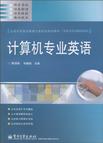计算机专业英语
出版时间:2010-10 出版社:电子工业 作者:郭明珠//华微微 页数:243
前言
计算机专业英语是高职高专院校一门重要的专业基础课,是学生进行深入专业学习、拓展专业知识的一个重要工具,也是许多权威认证考试需要掌握的基本技能之一。 本书主要以计算机系统组成、计算机硬件、软件、网络工程、数据库、多媒体技术、电子商务及计算机应用等方面的英语短文为载体,使学生掌握计算机科学方面的专业术语以及常用词汇,能够初步阅读专业性读物,提高阅读和翻译能力,能够使用英文界面的应用软件。通过对本书的学习,有利于学生专业知识的积累。 本教材具有如下特点: (1)选材新颖、广泛。教材收录了涵盖计算机硬件、软件、数据库、网络技术、多媒体技术、电子商务和计算机应用等多方面的专业文章,涉及的专业知识较为全面,内容丰富,且与计算机专业发展紧密接轨,具有一定参考价值。 (2)突出实用性,增强实战性。教材融知识性、趣味性和实用性为一体,文中配有插图,增强直观性。我们选取了大量的历年网络工程师、软件工程师等权威性考试的试题作为习题,同时也增强了学生的学习动力。 (3)全面兼顾计算机专业课程,针对性强。教材所涉及内容,以计算机专业开设的专业课程为出发点,全面兼顾与专业课程知识的衔接,并力图作为其知识的补充。 (4)结构合理,适于教学。教材依据知识模块分为10章,24个单元,每个单元包括学习目标、课文、词汇及短语、习题和阅读材料等几个部分,符合学生认知的一般过程,适于在教学中采用。 全书由长春职业技术学院郭明珠和华微微担任主编,许春艳、乔丹和张晓平担任副主编,参加本书编写的还有刘心美、田晶和高婷婷。本书在出版过程中得到电子工业出版社的鼎力支持,在此一并表示感谢! 由于作者水平有限且编写时间较为仓促,错误和不足之处在所难免,敬请广大读者批评指正。
内容概要
本书是为高职高专计算机专业英语课程编写的教材。文章内容涵盖计算机系统组成、计算机硬件、软件、网络工程、数据库、多媒体技术、电子商务及计算机应用等方面知识。全书分为10章,24个单元,每单元包括学习目标、课文、词汇及短语、习题和阅读材料等几个部分。 本书取材内容全面、新颖,实用性强。多数习题摘取了历年网络工程师、软件工程师等权威性认证考试的试题,增加了实战性,使读者能够掌握计算机英语文章的一般特点和大量专业词汇,并提高对计算机专业英语原版资料的阅读和理解能力以及计算机专业资料翻译能力。 本书既可作为高等职业院校教材使用,也可作为培训班和有一定计算机英语基础的读者参考使用。
书籍目录
Chapter One Introduction of Computer Unit 1 Brief Introduction of Computer Text Words & Expressions Exercises Reading Materials Unit 2 The Evolution of Computers Text Words & Expressions Exercises Reading MaterialsChapter Two Computer Hardware Unit 3 What is Hardware? Text Words & Expressions Exercises Reading Materials Unit 4 How PCs Work? Text Words & Expressions Exercises Reading MaterialsChapter Three Operating System Unit 5 What is Operating System? Text Words & Expressions Exercises Reading Materials Unit 6 Common Operating System Introduction Text Words & Expressions Exercises Reading MaterialsChapter Four Computer Software Unit 7 An Overview of Computer Software Text Words & Expressions Exercises Reading Materials Unit 8 Object-Oriented Programming Text Words & Expressions Exercises Reading Materials Unit 9 Introduction to Java Text Words & Expressions Exercises Reading MaterialsChapter Five Database Unit 10 What is a Database? Text Words & Expressions Exercises Reading Materials Unit 11 SQL Text Words & Expressions Exercises Reading MaterialsChapter Six Computer of Network Unit 12 Internet Text Words & Expressions Exercises Reading Materials Unit 13 The Internet Services Text Words & Expressions Exercises Reading Materials Unit 14 Data Communication Text Words & Expressions Exercises Reading MaterialsChapter Seven E-commerce Unit 15 What is E-commerce? Text Words & Expressions Exercises Reading Materials Unit 16 Security of E-commerce Text Words & Expressions Exercises Reading MaterialsChapter Eight Multimedia Unit 17 The Concept of Multimedia Text Words & Expressions Exercises Reading Materials Unit 18 The Basic Tools Text Words & Expressions Exercises Reading Materials Unit 19 Digital Audio Text Words & Expressions Exercises Reading Materials Unit 20 Digital Video Text Words & Expressions Exercises Reading MaterialsChapter Nine Animation Unit 21 2D Animation Text Words & Expressions Exercises Reading Materials Unit 22 3D Animation Text Words & Expressions Exercises Reading MaterialsChapter Ten Network Security Unit 23 Security in Computing Text Words & Expressions Exercises Reading Materials Unit 24 Network Firewall Text Words & Expressions Exercises Reading Materials参考译文参考答案参考文献
章节摘录
The basic job of computer is the processing of information. For this reason, computers can efined as devices which accept information in the form of instructions called a program and haracters called data, perform mathematical and/or logical operations on the information, and hen supply results of these operation. The program, which tells the computers what to do and the ata, which provide the information needed to solve the problem, is kept inside the computer in a lace called memory. Computers are thought to have many remarkable powers. However, most computers, whether arge or small, have three basic capabilities. First, computers have circuits for performing arithmetic operations, such as addition, ubtraction, division, multiplication and exponentiation. Second, computers have a means of communicating with the user. After all, if we couldnt feed information in and get results back, these machines would not be of much use. Third, computers have circuits which can make decisions. The kinds of decisions which computer circuits can make are of the type: Is one number less than another? Are two numbers equal? And, is one number greater than another? A CPU can be a single microprocessor chip, a set of chips, or a box of boards of transistors, chips, wires, and connectors. Differences in CPUs distinguish mainframes, mini- and microcomputers. A processor is composed of two functional units: a control unit and an arithmetic/logic unit, and a set of special workspaces called registers. The control unit is the functional unit that is responsible for supervising the operation of the entire computer system. In some ways, it is analogous to a telephone switchboard with intelligence because it makes the connections between various functional units of the computer system and calls into operation each unit that is required by the program currently in operation. The control unit fetches instructions from memory and determines their type or decodes them. It then break each instruction into a series of simple small steps or actions. By doing this, it controls the step-by-step operation of the entire computer system.
编辑推荐
项目导向,任务驱动,培养技能,面向就业。以专业词汇作为载体,以文章讲解突出核心,以经典习题强化训练,以丰富知识拓宽思路。
图书封面
评论、评分、阅读与下载
用户评论 (总计1条)
- 送货速度非常快哈
